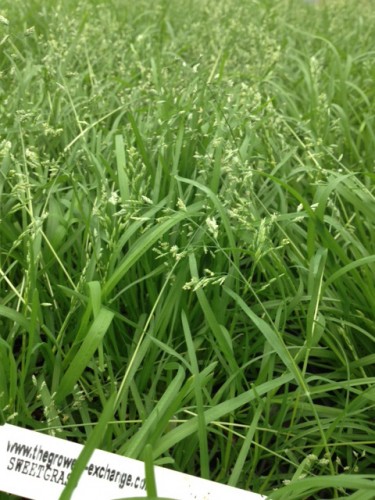Sweet grass has long been considered a sacred plant for a variety of different cultures. One whiff of this aromatic beauty, and you’re certain to know why. It has a distinctive scent that you’ll never forget. It’s a fairly hardy perennial, and it’s as native to North America as it is to Europe. It reaches just 20 cm in height at its peak, but the leaves can stretch outward for quite a ways by the end of the growing season.
Traditional uses abound for this amazing plant. It was often used as incense, tea flavoring, a kind of tobacco, and even perfume. It was, and is, also used for basket making.
As phenomenal as it is, it’s actually harder than you may think to grow. Unless you already have a plant established, it can be fairly difficult to get some started in your yard. Only a fresh seed will actually germinate with this plant. I learned that bit the hard way. I purchased seeds for nearly two years straight, and they were almost always dead. I simply couldn’t get it to grow through a store-bought seed. The only way I could really get it going was by dividing my plants. It seems to take really well to that.
One year, I decided to try something a bit different – fresh seeds. I created an open flat of soil right next to my plants, then started splitting them open right over the soil. In what seems like mere minutes in my memory, I had created a new sweet grass plant.
Sweet grass has long had a close association with people, which is probably one reason why viable seeds are so hard to get these days. Like garlic and horseradish, humans tend to replant it everywhere, and nature has a way of knowing when to scale back on viable seed production.
There are few things quite as rewarding as sweet grass, though, so spend a bit of time experimenting with this very traditional plant on your own this season.


.
Dear Deb,
I have always wanted to grow sweet grass,however, I have not been able to obtain plants or seeds.
Could you advise me where the best place to order?
Thank You,
Sandra
I have gotten seeds from Prarie Moon nursery. Although I have not put them in the ground yet.
Hi! I have a sweet grass potted plant that still has some green grass but I can’t get it thrive. Any suggestions?
I placed my sweet grass seedlings in 1/2 day sun. 4 years ago ….its thriving to the point it’s taken over a walking path.. I really need to pass a lot on to others.
Hi, I have been able to germinate Vanilla Grass Anthoxanum odoratum,is this the same as Hierochloe odorata?